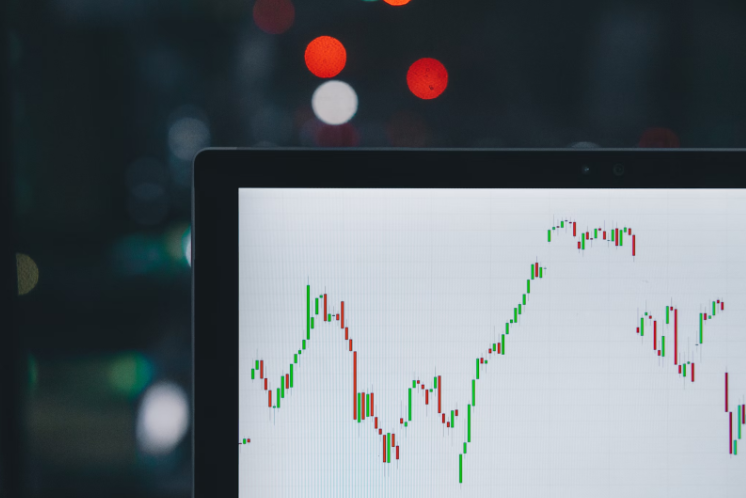In the financial markets’ gladiatorial arena, you’re faced with the decision of entrusting your hard-earned capital to either human prowess or the cold precision of automation. As a trader, you’ve likely heard the siren song of automated CFD trading—robots programmed to execute trades with algorithmic efficiency. Yet, while these trading bots can tirelessly monitor the markets and execute strategies with a speed unattainable by human traders, they’re not without their Achilles’ heel. You might appreciate how they strip emotion from the decision-making process, potentially leading to more consistent results. However, it’s crucial to acknowledge that automated systems aren’t immune to programming errors and require meticulous oversight to ensure they don’t stray from their intended path. As you weigh the benefits of lightning-fast, emotion-free transactions against the risks of over-reliance on technology, consider the layers of complexity that come with automated trading. What’s at stake is not just the performance of your investments, but your peace of mind in an industry where every second can mean the difference between profit and loss. So, what will it be, fellow trader: the human touch or the robotic arm? The answer might just redefine your approach to the tumultuous world of CFD trading.
Table of Contents
Understanding CFD Trading Automation
Delving into the realm of CFD trading automation, it’s important to recognize that, while software such as Expert Advisors can execute trades autonomously, they require rigorous oversight to ensure profitability and alignment with market dynamics. For insights into choosing the best CFD broker in the UK, you’ll find that automated trading systems, including Forex trading robots, offer distinct advantages. However, their efficacy hinges on how well they adapt to algorithmic trading complexities.
Pros of automated trading are considerable. They eliminate emotional decision-making, provide swift reactions to market shifts, and oversee numerous markets at once. Yet, the allure of using automated trading belies its challenges. Cons of automated trading emerge when market conditions change unpredictably. Your trading rules, coded into these systems, must be meticulously crafted and frequently updated to stay relevant.
As you monitor your automated system, you’ll notice that most EAs falter in generating substantial returns without your active involvement. They necessitate continuous tuning to the ever-changing market conditions. Even though algorithmic trading can process data rapidly, your role is pivotal in interpreting this information and making strategic adjustments. Remember, the emotional detachment of Forex trading robots is a double-edged sword; while it can prevent rash decisions, it also means they lack the human intuition to question their programming when market anomalies arise.
The Rise of Trading Robots
As the financial landscape evolves, trading robots have surged in popularity, offering traders a way to potentially enhance returns through automated, round-the-clock market engagement. Automated trading, embodied by Forex robots and expert advisors (EAs), operates on a trading platform, executing trades within your trading account based on automated algorithms. These EAs, often crafted in a specific programming language like MQL for platforms such as MetaTrader 4 and 5, promise to streamline the trading process.
Yet, it’s crucial to note that most EAs do not yield substantial returns without oversight. They necessitate ongoing monitoring and may suffer from a lack of updates or support, which can critically affect profitability. Successful robotic trading is not set-and-forget; it demands continuous refinement, a blend of technical and fundamental expertise, and a strong psychological grounding.
Automated trading systems are designed to minimize emotional decision-making and can execute trades based on technical indicators faster than a human ever could. This advantage allows you to exploit market conditions that change in the blink of an eye. However, these systems can be prone to technical issues and may not adequately adapt to unforeseen market conditions, underscoring the importance of maintaining a vigilant approach to automated CFD trading.
Benefits of Automation
Automated trading systems, such as Expert Advisors (EAs), can significantly reduce the emotional strain you’d typically experience while trading, as they operate without bias or fear. By taking emotion out of trading, these robots come with a set of advantages that often surpass human capabilities. One of the key Advantages of Automated Trading is the ability to react instantaneously to market changes. Unlike you, EAs can process trades based on a predefined set of criteria at a speed that is impossible for humans to match.
Using Automated Trading also allows you to monitor multiple markets for trading opportunities simultaneously, a feat that would be overwhelming and inefficient without technological aid. The historical data that EAs can analyze far exceeds what you could manually evaluate, ensuring that trade execution is based on comprehensive market analysis.
Furthermore, the consistency brought by EAs is unparalleled. They adhere to the trading strategy programmed into them, regardless of subjective feelings or external influences. This methodical approach to trading ensures a disciplined implementation of strategies, which is critical for long-term success. By simplifying and programming your strategies into an EA, you gain a clearer, data-driven understanding of your trading methods, which can be invaluable for refining your approach.
Risks of Automated Systems

While the precision and efficiency of Expert Advisors offer clear benefits, it’s crucial to consider that they may falter in dynamic market conditions, potentially leading to significant losses. Automated systems, by nature, are designed to follow pre-programmed rules, which can become a disadvantage when the market’s complexity requires a nuanced approach. The risks of automated systems lie in their inherent inability to interpret subtleties that a human trader might perceive and act upon.
Moreover, you’re not immune to mechanical trading errors. If your internet connection is lost, your automated system could miss critical trade signals, leaving you susceptible to losing money. It’s not just about the mechanical aspects; programming errors or outdated algorithms can quickly turn a profitable system into a liability. Your vigilance is required to ensure the system is updated and error-free, adding a layer of complexity and responsibility to your trading strategy.
Emotions can still play a part, too. Your decision to intervene, driven by fear or greed, can undermine the automated system’s effectiveness. Hence, while the automated trade process might seem devoid of emotional risk, the person overseeing it can still make emotionally charged decisions, potentially disrupting the system’s performance. It’s essential to remain analytical and methodical, weighing the cons against the potential advantages.
Emotional Detachment in Trading
Nearly every trader has faced the challenge of keeping emotions in check, but by leveraging automated CFD trading systems, you’re better positioned to maintain an emotional detachment that is critical for consistent decision-making. Unlike manual trading, where feelings can cloud judgment, the use of an automated system ensures a methodical approach, free from emotional bias.
Here’s why emotional detachment in trading is essential:
- Automated systems eliminate emotional interference by adhering strictly to pre-set rules, enabling consistent execution of trading strategies.
- Robots use data-driven analysis to make trading decisions, which is especially beneficial in complicated trading scenarios where human emotions might lead to costly mistakes.
- A focus on risk management is maintained since automated systems can be programmed to follow risk parameters without the hesitation or fear that might affect a human trader.
The pros of maintaining emotional detachment in trading are clear: it allows for a disciplined approach, essential in volatile markets like CFDs and real estate. On the other hand, one should be aware of the cons, such as the potential for over-reliance on technology and the need for continuous monitoring to ensure systems are aligned with market conditions. By understanding these pros and cons, you can use an automated system effectively to enhance your trading performance.
Backtesting Automated Strategies
Having established the importance of emotional detachment through automation, it’s crucial to examine how backtesting automated strategies can provide a clear picture of a system’s historical efficacy. Backtesting essentially allows you to scrutinize the reliability of system trading by running the automated strategy against historical data. This is a critical step before deploying the system on live trading platforms, as it helps to make sure the strategy is likely to perform well in real-time scenarios.
Methodically evaluating the strategy over different market conditions, especially if you’re involved in Day Trading or navigating the volatile forex markets, is imperative. You’re looking for consistency in performance, an understanding of risk exposure, and the system’s adaptability to market shifts.
Data-driven analysis through backtesting gives you the insights needed to fine-tune your strategy. It’s about identifying strengths to capitalize on and weaknesses to address. By adjusting parameters and rules based on backtesting outcomes, you enhance the strategy’s robustness—increasing the likelihood of success in the live market. Remember, past performance is not indicative of future results, but backtesting automated strategies is the closest you can get to predicting how a system might fare in future trades.
The Necessity of Ongoing Monitoring
Despite the allure of set-and-forget trading systems, ongoing monitoring is crucial to adapt to the ever-evolving market conditions and maintain the effectiveness of automated strategies. While automated CFD trading promises efficiency and the potential for profit, you must keep in mind that these systems are not infallible.
Consider the following key points:
- Financial Review: Regularly reviewing the performance of your automated system during live trading is essential. This will help you catch any deviations from expected outcomes and make necessary adjustments.
- Error Identification: Automated systems are prone to programming errors. Without ongoing monitoring, these errors could lead to significant losses. Experienced traders know to look for and correct these issues promptly.
- Market Adaptation: Market conditions change rapidly, and what works today may not work tomorrow. Trades per day could vary greatly, and a strategy that isn’t monitored and updated can quickly become obsolete and lose money.
To trade manually might seem outdated, but it gives traders direct control over their investments. On the other hand, an automated system can execute a multitude of trades per minute, a feat impossible for a human. However, without ongoing monitoring, even the most sophisticated automated strategies can falter, underscoring the necessity for continuous oversight.
Over-Optimization Pitfalls

Over-optimization’s snare lies in crafting trading algorithms that excel in backtesting but falter when exposed to the unpredictable nature of live markets. In the robot vs. trader debate, this is a significant con in the realm of automated CFD trading. You’re compelled to consider whether your system, honed to perfection with historical data, can withstand the test of volatile and ranging markets.
The pitfalls of over-optimization manifest when the meticulous calibration to past forex market conditions creates an illusion of infallibility. Your trading plan may appear robust until slight execution changes drastically skew the anticipated outcomes. This is the double-edged sword of automated systems; they often lack the discretionary insight a human trader might employ when the markets deviate from the norm.
Mechanical failures, such as a lost internet connection, further expose the fragility of over-optimized strategies. The discrepancy between theoretical trades and the harshness of real trades can lead to significant financial setbacks. Thus, it’s pertinent to monitor these systems rigorously. You must be prepared to intervene and recalibrate to sidestep the perils of over-optimization, ensuring your automated CFD trading strategy remains responsive, not just reactive, to the dynamics of forex markets.
Recognizing Scams and Pitfalls
While you navigate the challenges of over-optimized automated CFD trading systems, it’s equally crucial to be vigilant against the scams and pitfalls prevalent in the market. Recognizing scams in the trading world is a significant aspect of financial planning. Here’s how to stay sharp:
- Be Skeptical of Overpromises: If an automated system sounds too good to be true, it likely is. Scrutinize any system that guarantees high returns with low risk. Remember, consistent winning trades are not a feature of legitimate trading.
- Analyze Performance Claims: Look for suspect results in the system’s track record. Legitimate software provides transparent and verifiable trading history. If you can’t question the trade logic or if the data is not forthcoming, there’s a reason to be suspicious.
- Expertise is Key: Even with an automated system, expertise is crucial. Buying a trading robot doesn’t equip you with the knowledge to make necessary interventions. The pros and cons of a system must be understood to avoid the pitfalls of automated trading, including the possibility of recurring losing trades.
Making the Automation Decision
Deciding to implement automated trading in your investment strategy requires a careful assessment of both its potential benefits and inherent limitations. When you contemplate the use of automated systems, such as Expert Advisors (EAs), it’s essential to recognize that most EAs do not yield exceptional returns without consistent oversight. Despite their ability to conduct trades 24/7, these forex trading robots demand vigilant monitoring to adapt to market changes and mitigate losses during drawdown periods.
The allure of automated trading lies in its capacity to minimize emotions and expedite order entry—attributes that are increasingly popular among day traders. However, this technology is no magic solution; it combines years of experience in trading forex with adept programming skills. The pros of automated trading systems include the ability to take advantage of market opportunities around the clock and the reduction of emotional decision-making.
Yet, even with these advantages, you must acknowledge that success is not automated. The emotional element is transferred from making trade decisions to managing the system itself. You’re still responsible for 91% of the outcome through setup, monitoring, and adjusting parameters. Therefore, the decision to automate should be data-driven, weighing the pros against the need for continuous engagement with your trades.

